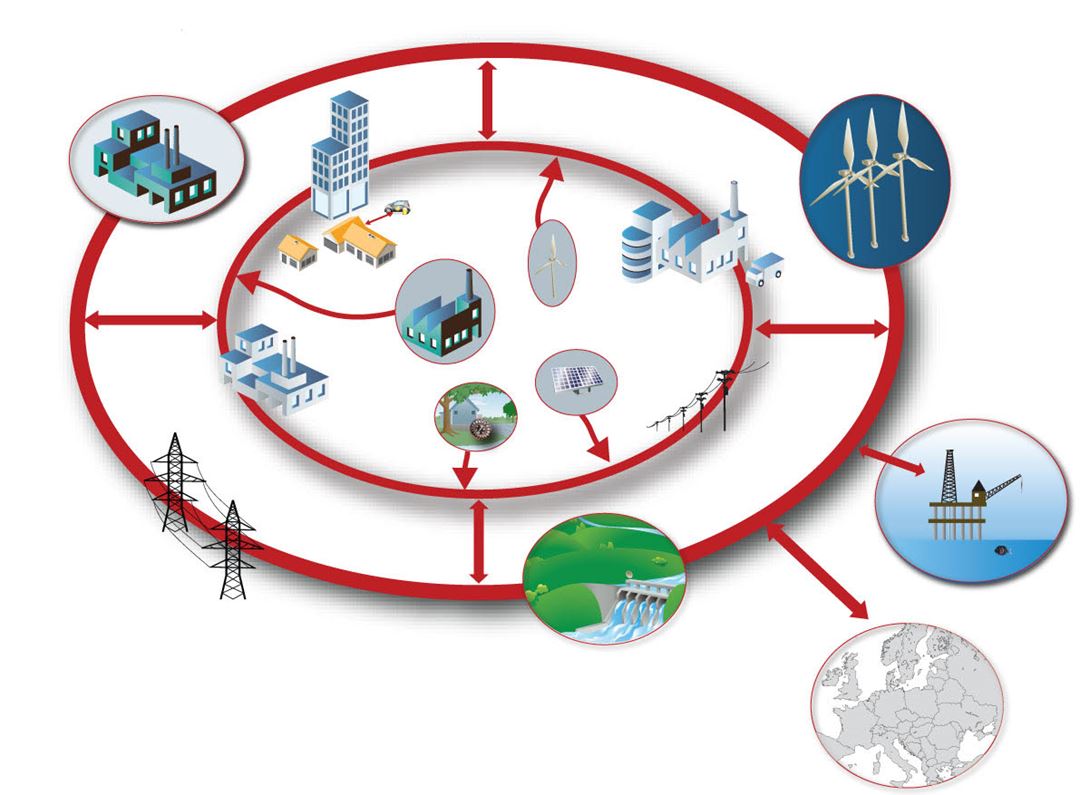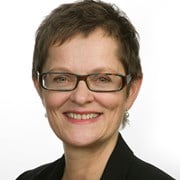Download relevant pictures for editorial purposes in our "On Beyond Oil"-album at flickr!
Centre for intelligent electricity distribution
Duration: 2016 – 2024
Budget: (millions NOK): 320
Centre Director: Gerd Kjølle
SINTEF Energy Research will head the programme in cooperation with NTNU.
http://www.sintef.no/en/projects/cineldi/
CINELDI will contribute to designing the future's flexible and robust electrical distribution grid at an acceptable cost.
CINELDI will facilitate renewable energy, electrification of transport and more efficient use of energy.
Business potential:
CINELDI will develop a knowledge base for electrical grid operators and authorities to establish good strategies to optimize grid operations.
This will provide:
- More efficient grid operationsReduced costs for investments and operations
- Future-oriented regulation of utility companies, to ensure the socially efficient development and operation of the power grid.
CINELDI will also provide new business opportunities for technology suppliers:
- New products and services
- Development of commercial solutions
- Strengthening of national and international competitivenessIncreased visibility and recruitment
SmartGrids in Europe
There are several SmartGrid research projects around the world, especially in Europe, USA and Japan. SINTEF are involved in European projects on SmartGrids. The Cineldi-project has 13 international partners, and it aims to build competence in Europe and globally.
The customer is key in order for SmartGrid so work well. The customers' attitude and actions in contributing to a flexible net is important.
SINTEF researchers Gerd Kjølle and Kjell Sand from NTNU have discussed the content of this research in an article for the Norwegian business daily "Dagens Næringsliv" dated June 3 2016. Here follows the complete article:
Smart electricity – big savings
If we make the electricity distribution grid smart enough, households and industry can save the Norwegian electricity sector NOK 15 billion in new investment.
- Kjell Sand is an adjunct professor at NTNU's Department of Electric Power Engineering and
- Gerd Kjølle is a Chief Scientist at SINTEF Energy Research.
That was how the duo introduced their article in the Norwegian business daily Dagens Næringsliv (DN) on Friday 3 June.
Here is the complete article, reproduced with the permission of DN.
"The distribution grid of the future is called 'SmartGrids' and is currently on the drawing board – sitting there like a golden Kinder Egg.
In reality, 'SmartGrids' brings together the power distribution grid and the internet, and simultaneously offers a multitude of benefits including increased energy efficiency, reduced peak loads, and better integration of electrical transport and renewable electricity production. And without all the major increases in capacity that would normally accompany such developments.
Everyone has a lot to gain by its introduction. The Norwegian Water Resources and Energy Directorate estimates that Norway will have to invest NOK 130 billion in its distribution grid system by the year 2025.
It isn't going too far to claim that SmartGrid technology can reduce the need for this investment by at least ten per cent – thus saving the society close to NOK 15 billion.
Many investors
The problem is that no single player can introduce SmartGrids on its own.
To make smart distribution grids a reality, many investors will have to put their hands in their pockets, including you and me, the industrial sector and the grid companies.
So, one of the challenges is to inform and motivate all those involved to purchase the equipment needed to get the project off the ground.
It is also important to digitise the grid and ensure that systems at different levels in the electricity supply infrastructure are in communication. If this doesn't happen, many of the benefits of SmartGrids will be lost.
It is these issues that are the subject of a significant research effort currently being carried out under the auspices of CINELDI (the Centre for INtelligent ELectricity DIstribution), which is one of the Norwegian Research Centres for Environmentally-Friendly Energy that recently received funding from the Research Council of Norway.
Avoiding building extra "lanes"
From the outside, being "smart" when it comes to distribution grids is all about avoiding having to build extra traffic "lanes" that are only going to be used in the rush hour. The idea is to spread electricity consumption over the 24-hour day instead. But this doesn't mean that you have to make dinner in the middle of the night.
With SmartGrids you have the opportunity to give the grid operator permission to disconnect flexible consumption such as hot water or floor heating when demand in the grid system is at its highest.
Theses services can be turned off without noticeable losses in consumer comfort because the temperature changes involved are relatively slow.
At the same time, you and the grid company achieve two-way communication via the new, smart, advanced metering systems (AMS). All Norwegian electricity consumers will have these installed by 1 January 2019.
Tailored to green energy consumption
Your meter or the internet will provide you with information about prevailing electricity prices and tariffs. Pilot studies have shown that this information alone will increase consumers' awareness of their own consumption and motivate them to adopt energy efficient behaviour.
The AMS box makes it possible to go one step further and install smart devices and control systems that automatically disconnect low priority sources of consumption, for instance when prices are high.
Consumers will have to purchase this equipment themselves. Society's capacity to be persuaded to make these purchases and adopt energy efficient behaviour will decide whether SmartGrids will become more than just a beautiful idea – and whether the NOK 15 billion can be saved.
The SmartGrid concept fits like hand in glove with other new technologies that the 'green shift' is bringing with it, including electric cars, small hydropower plants, and energy-efficient, but output-demanding, devices such as induction stoves, and water heaters supplied by flow-through systems. And last, but not least, solar panels that will turn both households and industrial companies into electricity suppliers.
In the absence of SmartGrids these systems will require major new investment to boost the capacity of local distribution grids. And this is where most of the 15 billion can be saved.
A flying start
Knowledge is a vital part of the campaign to motivate consumers to make smart distribution grids a reality.
The Norwegian Smartgrid Centre, which is being run by the research community, the power companies and the supply industry, has funded the setting up of eight pilot projects. These involve more than 10,000 electricity customers who have had smart electricity meters and new technology installed to enable us to gather data about tomorrow's opportunities and consumer behaviour.
The projects have provided a lot of information. But technology continues to develop rapidly, especially in the fields of ICT and distributed electricity production. Everything is connected. This is why it is essential to keep gathering more, and more robust, data.
Additional information:
- The EcoGrid a project, an energy-market concept empowering households to manage renewables, coordinated by SINTEF Energy wins one of the EU Sustainable Energy Awards 2016.
- EcoGrid explained with lego.
- Playing Mozart on an inductor in SmartGrid-Lab at SINTEF/NTNU.
* This text is background information for the participants at the "On Beyond Oil"-event.


